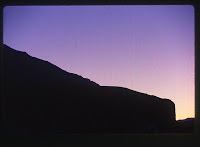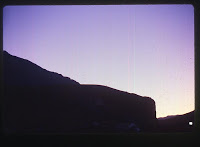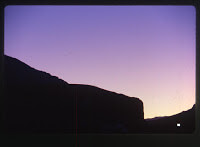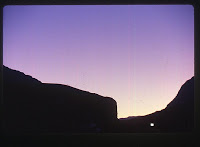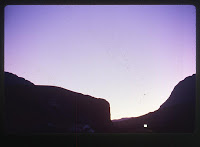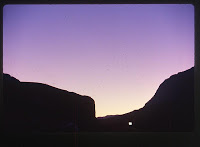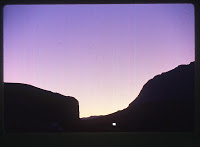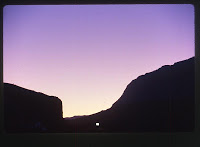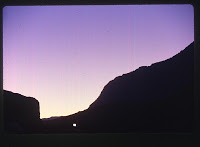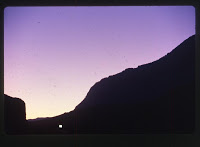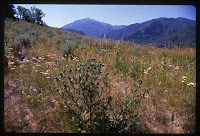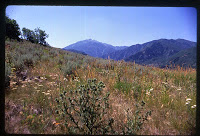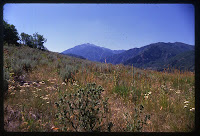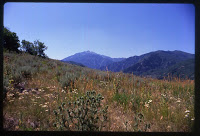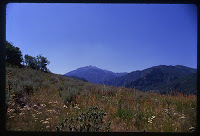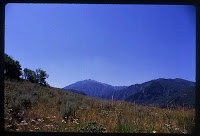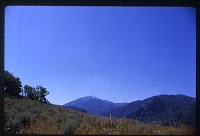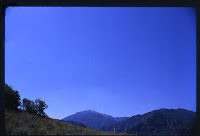The window is the view
By Al R. Young
One piece of advice I received as a cub artist sounded quite savvy: "Paint to standard frame sizes. That way, you won't be out the expense of custom frames."
Savvy or not, the idea never worked for me. When I compose an image, I do so in terms of the way the visual elements and the image boundaries interact, the objective being that of creating a particular mood, which correlates with the way the eye moves over the image.
I suppose it is possible to start with a fixed size and proportion, but I choose not to be constrained in that manner because the constraint creates a preoccupation. Instead, I prefer to let the mood or the idea that wants expression in an image set its own bounds. After all, if I were a painting, that's the way I would want to be treated. At the very least, I would want the artist to know me better than I know myself, and, in setting bounds, ensure my happiness when I had come to know as much about myself as the artist knows.
The subject of composition, like the subject of eye movement, is wonderfully complex. I have never found, nor have I really wanted, a formula by which to compose my artworks. Composition is too creative, too much fun, to be formula-driven anyway.
The following series of photographs that I took many years ago (when composition and eye movement were much on my mind and much on my reading list) is perhaps the simplest way I can think of to introduce the kind of activity involved in letting the idea for an artwork set its own boundaries.
While it may be difficult to look at these images without being preoccupied with "What am I looking at?" the point is not to identify the content, but to observe your own reaction to the relationship between the frame and the configurations of the elements in the frame. (The scene is a naturally occurring land form in the very early twilight of a sunrise. The white dot is a street light.)
The following series of images presents the same kind of considerations, but with more readily recognizable content.
One of the most interesting discussions I ever encountered concerning the framing of visual art comes from the world of the comic strip. The author's comments opened my eyes to the fact that the size and proportion of the frames in a comic strip were manipulated according to the objectives of the artist who renders the images; that, like the manner in which a motion picture is edited, sequence, timing, and transition are paramount. (See, for example, The Art of the Comic Strip by Walter Herdeg and David Pascal, Zurich, The Graphis Press, 1972.)
The experience was like that of a friend of mine who, having spent several hours at the Louvre, said that after a while looking at innumerable paintings, he suddenly realized he had quit looking at the images and was, instead, looking at the frames. Of course, his point is not exactly the point, here, but it does accentuate the need to go back and forth in one's observations--while composing an image--in terms of the gestalt between the content of an image and its boundaries.
All of this bears directly upon the enormous task an artist faces in attempting to compress the experience of a motion picture, for example, into a single (gilded) frame.
Browse articles by year: 2026 . 2025 . 2024 . 2023 . 2022 . 2021 . 2020 . 2019 . 2018 . 2017 . 2016 . 2015 . 2014 . 2013 . 2012 . 2011 . 2010 . 2009 . 2008 . 2007 . 2006 . 2005 . 2004 . 2003 . 2002 . 2001 . 2000 . 1999 . 1998 . 1997 . 1996
Browse articles by topic: Art lessons . BenHaven Archives . Blank art diaries . Fine art photography . Framing . Illustration . Inspiration and creativity . Isles of Rune . Limited Editions Collection . My Fathers Captivity . News . Novellas . Oil paintings and prints . Operations announcements . Orders and shipping . Overview . Portfolios . The Papers of Seymore Wainscott . Project commentaries . Recipes by Nancy Young . Recommended reading . Recommended viewing . Temple artworks . The Storybook Home Journal . Tips and techniques . Tools supplies and operations
Browse articles by topic: Art lessons . BenHaven Archives . Blank art diaries . Fine art photography . Framing . Illustration . Inspiration and creativity . Isles of Rune . Limited Editions Collection . My Fathers Captivity . News . Novellas . Oil paintings and prints . Operations announcements . Orders and shipping . Overview . Portfolios . The Papers of Seymore Wainscott . Project commentaries . Recipes by Nancy Young . Recommended reading . Recommended viewing . Temple artworks . The Storybook Home Journal . Tips and techniques . Tools supplies and operations
